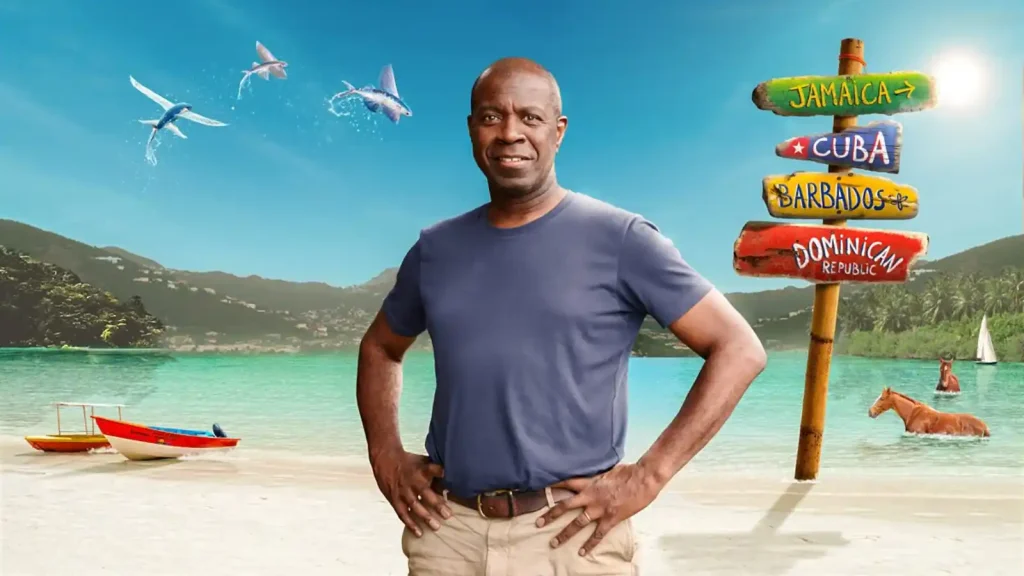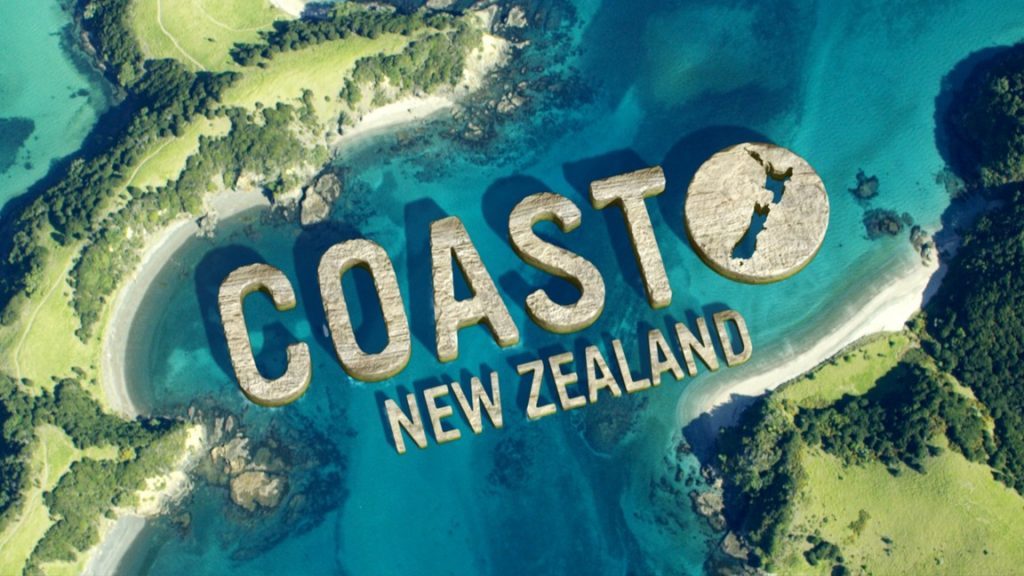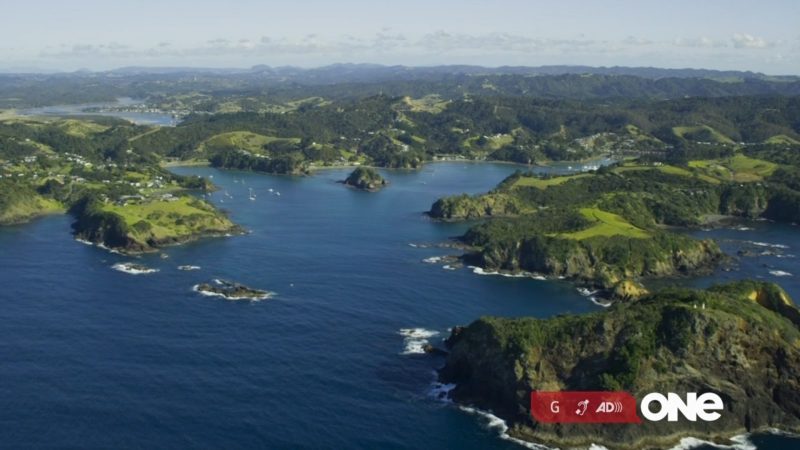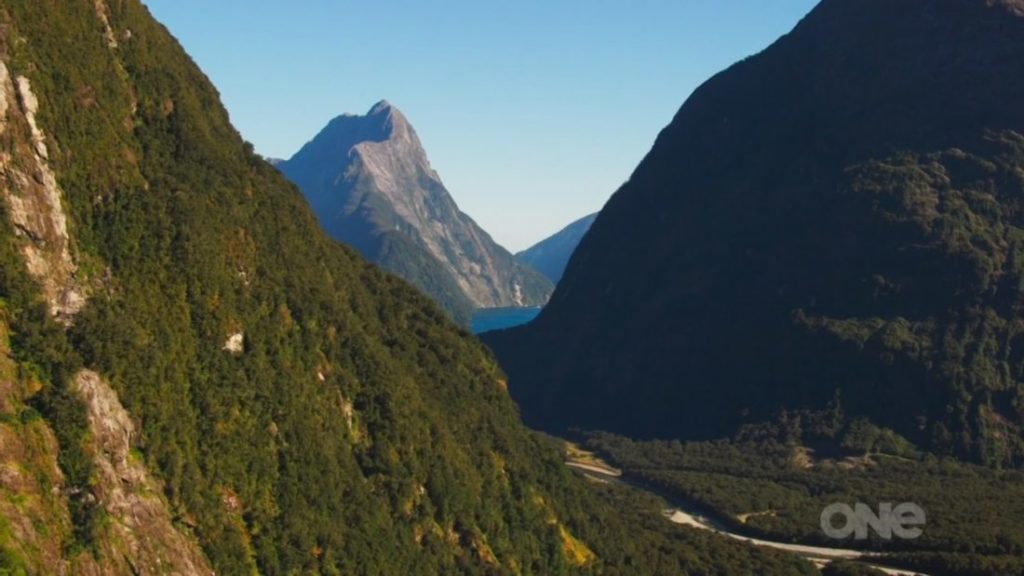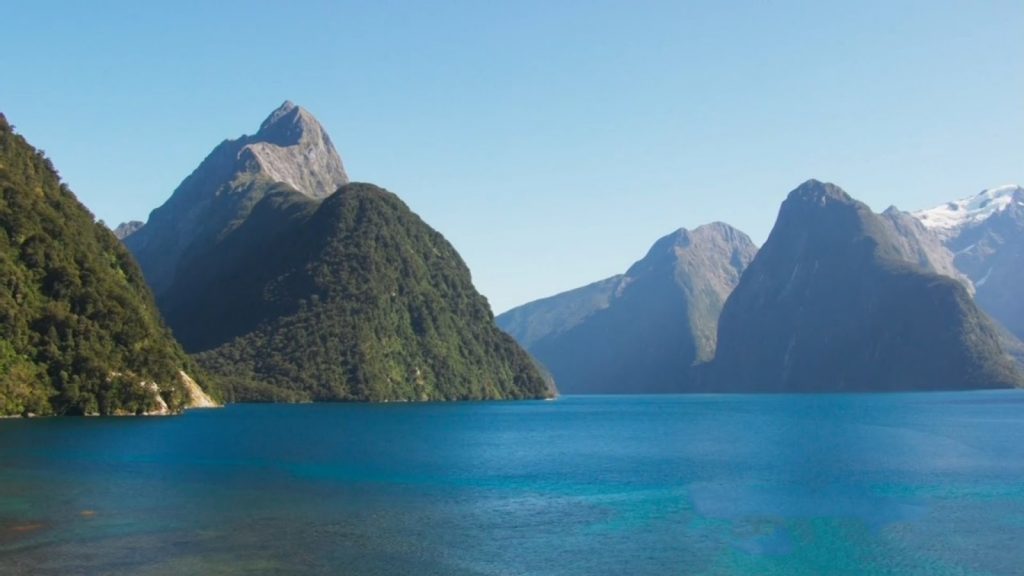Clive Myrie’s Caribbean Adventure episode 9: Clive Myrie embarks on a fascinating journey 200 miles east of Havana to the historic town of Trinidad, a UNESCO World Heritage site. This picturesque locale, renowned for its well-preserved colonial architecture and cobblestone streets, offers a glimpse into Cuba’s vibrant past. Upon arrival, Clive immerses himself in the town’s rich cultural tapestry. One of his first encounters is with an octogenarian carpenter whose craftsmanship has played a crucial role in maintaining the integrity of this 16th-century city. Through engaging conversations, Clive learns about the meticulous techniques and unwavering dedication required to preserve Trinidad’s historical charm.
As he strolls through the town, Clive is captivated by the lively atmosphere and the warm, welcoming spirit of the locals. His exploration leads him to a bustling dance studio where he is invited to learn the art of salsa dancing. Under the guidance of skilled instructors, Clive practices the energetic and rhythmic moves that are integral to Cuban culture. The dance lessons serve as a perfect prelude to an evening filled with music and joy.
Eager to test his newly acquired skills, Clive heads to one of Trinidad’s renowned live music venues. Here, the infectious beats of traditional Cuban music fill the air, and Clive finds himself drawn into the pulsating rhythms. Surrounded by both locals and visitors, he joins in the spirited dance, experiencing firsthand the unifying power of music and movement.
While Trinidad’s vibrant present is captivating, Clive also delves into the darker aspects of its history. He discovers the town’s connection to the sugar industry, which once dominated the region’s economy. Through visits to former sugar plantations and insightful conversations with historians, Clive uncovers the harsh realities of this lucrative trade. He learns about the lives of enslaved Africans who were brought to Cuba to work on the sugar fields, their suffering, and the enduring legacy of their contributions.
Throughout his stay, Clive is struck by the juxtaposition of Trinidad’s beauty and its complex history. The town’s colonial-era buildings, with their colorful facades and ornate ironwork, stand as a testament to both its prosperous past and the resilience of its people. Every corner of Trinidad tells a story, from the Plaza Mayor, surrounded by grandiose mansions, to the bell towers that offer panoramic views of the surrounding countryside.
Clive Myrie’s Caribbean Adventure episode 9
Clive’s journey is not just about exploration; it’s also about connection. He engages with local artisans, musicians, and dancers, each encounter enriching his understanding of Trinidad’s cultural heritage. He visits the vibrant markets, where he samples local delicacies and admires handcrafted goods, gaining a deeper appreciation for the town’s artisanal traditions.
In the evenings, Clive often finds himself in the heart of Trinidad’s social life – the town’s lively squares and music-filled streets. Here, the lines between performer and audience blur, as everyone becomes part of the celebration. These moments highlight the communal spirit that defines Trinidad, where music and dance are woven into the fabric of daily life.
As his time in Trinidad draws to a close, Clive reflects on the profound experiences and lessons learned. His journey has been a tapestry of contrasts – the joyous rhythm of salsa juxtaposed with the somber history of sugar, the timeless beauty of colonial architecture against the backdrop of a community’s enduring spirit. Trinidad, with its rich heritage and vibrant culture, has left an indelible mark on Clive, and he departs with a deeper understanding of Cuba’s past and present.
Clive Myrie’s Caribbean Adventure episode 9 – Trinidad – Cuba captures the essence of this remarkable town, inviting viewers to join him on a journey through time and tradition, where every step tells a story and every moment is a dance.
Caribbean Adventure episode 9
Setting the Stage: Clive Myrie’s Caribbean Adventure
Clive Myrie’s Caribbean Adventure isn’t just a journey through picturesque landscapes; it’s a deep dive into the heart of cultural heritage and family legacy. As the sun sets over the lush green hills and turquoise waters, Myrie embarks on a voyage that connects the dots of history, personal memories, and the vibrant life of the Caribbean islands. This series is not merely a travelogue; it’s a tapestry woven with stories, struggles, and celebrations that define the Caribbean spirit.
In every episode, Myrie opens a window into the unique blend of traditions, music, and cuisine that make these islands a mosaic of cultures. Whether he’s savoring the aromatic spices of a local dish or tapping his feet to the rhythm of calypso, Myrie’s journey captures the essence of the Caribbean. His encounters with locals reveal not just their daily lives but also the warmth and resilience that characterize these communities. Each island, from Trinidad to Cuba, unfolds a new chapter in this rich narrative, inviting viewers to experience the magic and mystery of the Caribbean firsthand.
Personal Connection: The Myrie Family’s Journey
The adventure is deeply personal for Myrie. It’s a homecoming of sorts, a retracing of steps taken by his ancestors who moved from the Caribbean to Britain. Through his journey, Myrie delves into his family’s history, uncovering stories of migration, survival, and adaptation. His connection to the islands is palpable, as he revisits the places his parents spoke of and the customs they cherished.
Myrie’s reflections on his family’s migration are poignant. They echo the broader experiences of many Caribbean families who left their homelands in search of better opportunities. This narrative thread adds a layer of depth to the series, transforming it from a mere exploration of scenic locales to a heartfelt journey of discovery. It’s about finding pieces of his past in the present, and understanding how these fragments have shaped his identity.
The Allure of the Caribbean: A Blend of Cultures and Histories
The Caribbean’s allure lies in its rich cultural mosaic and storied past. Each island offers a unique blend of influences from African, European, and indigenous cultures, creating a vibrant and dynamic tapestry. From the colonial architecture of Cuba to the lively festivals of Trinidad, the Caribbean is a living museum of history and tradition.
As Myrie navigates through bustling markets, historic sites, and serene beaches, he uncovers the layers of history that have shaped these islands. The legacy of colonialism, the fight for independence, and the preservation of cultural heritage are themes that resonate throughout his journey. These elements not only define the Caribbean’s past but also influence its present and future.
The islands are more than just beautiful landscapes; they are places where history and culture intermingle. Myrie’s exploration brings to light the stories that make the Caribbean a unique and fascinating destination. It’s a celebration of the resilience and creativity of its people, who have turned their history into a source of strength and inspiration.
Join Clive Myrie as he embarks on this unforgettable Caribbean adventure, where every moment is a discovery and every story a testament to the enduring spirit of the islands.
Trinidad: A Cultural and Historical Tapestry
The Historical Significance of Trinidad
Trinidad stands as a beacon of Caribbean history, where every cobblestone street whispers tales of its storied past. Founded in the 16th century by Spanish colonizers, the city’s architecture is a testament to its colonial legacy. The beautifully preserved buildings and vibrant facades transport visitors back in time, evoking images of a bygone era. As you stroll through the city, it’s easy to imagine the hustle and bustle of traders and explorers who once roamed these streets.
The city’s historical importance is further solidified by its designation as a UNESCO World Heritage Site. This recognition is not just a nod to its well-preserved colonial buildings but also to its role in the broader narrative of the Caribbean. Trinidad’s history is interwoven with the rise and fall of empires, the echoes of slavery, and the relentless march towards freedom and independence. Every corner of this city tells a story, making it a living museum of cultural heritage.
The Myrie Family Mystery: Eugene’s Journey to Cuba
Eugene, Clive Myrie’s grandfather, embarked on a journey to Cuba that has been shrouded in mystery for decades. This chapter of the Myrie family history is rich with intrigue and discovery. Like many Jamaicans of his time, Eugene sought better opportunities amid the economic challenges in Jamaica. The lure of Cuba’s booming sugar industry was irresistible, promising work and a chance to escape the poverty back home.
Eugene’s story is not unique; it mirrors the experiences of countless Caribbean migrants who moved across islands in search of a better life. This wave of migration between 1912 and 1940 was driven by the demand for labor in Cuba’s sugar plantations. The United Fruit Company, among others, capitalized on this influx of workers, offering low wages but steady employment. Eugene’s journey highlights the broader economic and social dynamics of the Caribbean, where migration patterns were often dictated by the ebb and flow of colonial economies.
Exploring Local Life and Traditions
Trinidad’s charm extends beyond its historical significance; it’s a place where traditions are cherished and celebrated. The concept of ‘casa particulares’ exemplifies Cuban hospitality. These privately-owned bed and breakfasts offer visitors a glimpse into local life, where warmth and welcome are the order of the day. Staying in a casa particular is like stepping into a family reunion, where stories are shared over hearty meals, and lifelong connections are forged.
The city’s vibrant arts scene is another highlight. Master craftsmen like Jose keep traditional skills alive, restoring antique furniture and creating intricate works of art. His workshop is a treasure trove of history, filled with the aroma of freshly cut wood and the sound of tools in skilled hands. Each piece of furniture tells a story, reflecting the dedication and artistry that go into preserving Trinidad’s cultural heritage.
The Rhythm of the Islands: Learning to Salsa
No visit to Trinidad is complete without experiencing its music and dance. Salsa, with its infectious rhythm and vibrant energy, is the heartbeat of the Caribbean. Learning to dance salsa in Trinidad is more than just picking up steps; it’s about feeling the music and letting it guide you. The lively drumbeats, the calls of “uno, dos, tres,” and the joy of dancing with a partner capture the essence of Caribbean life.
Myrie’s attempt to master salsa is a testament to the island’s welcoming spirit. Even if you’ve never danced before, the locals’ enthusiasm and encouragement make you feel like you’ve been part of their community for years. It’s a dance that transcends language and culture, bringing people together in a celebration of life. As you sway to the rhythm, you realize that salsa is not just a dance; it’s a way of life, reflecting the resilience and joy that define the Caribbean spirit.
The Legacy of Sugar: Economic and Social Impacts
The Sugar Industry’s Role in Cuban History
The sugar industry has been the lifeblood of Cuba for centuries, shaping its economy and influencing its culture. From the early days of Spanish colonization, sugar cane thrived in Cuba’s fertile soil and tropical climate. This lucrative crop turned Cuba into the world’s sugar powerhouse, attracting merchants, investors, and laborers from across the globe. The wealth generated from sugar exports helped build the grand mansions and colonial buildings that still stand today, testifying to an era of opulence.
Yet, the sugar industry’s influence extends far beyond its economic contributions. It played a crucial role in the social and political fabric of the island. As sugar plantations grew, so did the demand for labor, leading to a dark chapter in history marked by the transatlantic slave trade. Enslaved Africans were brought to Cuba to work in the fields under brutal conditions, a legacy that has left an indelible mark on the nation’s identity. The echoes of this past are still felt, with sugar being both a symbol of prosperity and a reminder of human suffering.
The Dark Past: Slavery in the Caribbean
The story of sugar in the Caribbean is inseparable from the grim reality of slavery. As demand for sugar soared, so did the need for cheap labor. The Spanish colonizers turned to the transatlantic slave trade, forcibly bringing millions of Africans to the Caribbean islands. These enslaved individuals toiled in the harshest conditions, working long hours in the scorching sun to cultivate and harvest sugar cane. Their lives were characterized by relentless labor, minimal sustenance, and severe punishment.
Despite the abolition of slavery in the late 19th century, the scars of this period remain visible. The descendants of enslaved people form a significant part of the Caribbean population, and their cultural contributions have profoundly influenced the region. The music, dance, and traditions that are celebrated today are a testament to their resilience and creativity. The historical plantations, now turned into museums, serve as poignant reminders of this dark past, ensuring that the legacy of those who suffered is not forgotten.
From Past to Present: Modern-Day Reflections
Today, the sugar industry in Cuba is a shadow of its former self, but its legacy continues to shape the nation. Modern-day Cuba has diversified its economy, yet the remnants of its sugar-dominated past are evident. Former plantations have been repurposed into cultural sites, attracting tourists who are eager to learn about this significant aspect of Caribbean history. These sites offer a window into the lives of the plantation owners and workers, providing a comprehensive view of the socio-economic dynamics of the past.
Cuban society has also evolved, drawing strength from its complex history. The fusion of African, European, and indigenous influences has created a unique cultural tapestry. Festivals, music, and art reflect this rich heritage, celebrating the contributions of all who have called the Caribbean home. As Cuba moves forward, it carries with it the lessons of its past, striving to build a future that honors its diverse roots while forging a path toward greater prosperity and equity.
The journey through Cuba’s sugar legacy is not just about understanding economic impacts; it’s about recognizing the human stories intertwined with this industry. It’s about acknowledging the resilience of those who endured hardships and celebrating the cultural richness that emerged from their struggles. This chapter in Cuba’s history, though fraught with pain, also highlights the indomitable spirit of its people and their enduring ability to transform adversity into strength.
FAQs Clive Myrie’s Caribbean Adventure episode 9
What motivated Clive Myrie to embark on this Caribbean adventure?
Clive Myrie’s journey to the Caribbean is deeply personal, driven by a desire to reconnect with his family roots and explore the rich cultural heritage of the islands. His parents moved from the Caribbean to Britain, and this adventure is an opportunity to trace their steps and understand the places they spoke of so fondly. Myrie’s journey is not just about discovering new places, but also about uncovering stories that shaped his family history and the broader narrative of Caribbean migration and resilience.
Myrie’s motivation goes beyond personal exploration. He aims to share the vibrant cultures, histories, and traditions of the Caribbean with a wider audience. By delving into the heart of these islands, he hopes to bring to light the unique blend of influences that make the Caribbean such a fascinating and dynamic region. His adventure is a celebration of the spirit of the Caribbean people and their indomitable energy and creativity.
How did Clive Myrie trace his grandfather’s journey in Cuba?
Clive Myrie’s quest to trace his grandfather Eugene’s journey in Cuba involved extensive research and local insights. His grandfather was part of the significant wave of Jamaican migration to Cuba in the early 20th century, drawn by the promise of work in the booming sugar industry. To uncover the details of Eugene’s life in Cuba, Myrie met with local historians and guides who specialized in the lives of Jamaican immigrants during that period.
Through conversations with experts and locals, Myrie pieced together his grandfather’s story. He discovered that Eugene, like many others, sought economic opportunities and navigated the challenges of being a migrant worker in a foreign land. This journey provided Myrie with a deeper understanding of the socio-economic conditions that prompted such migrations and the personal histories intertwined with these broader movements.
What are some of the key historical sites mentioned in the series?
Several key historical sites feature prominently in Clive Myrie’s Caribbean adventure. In Trinidad, Cuba, the city’s beautifully preserved colonial architecture stands out. Founded in the 16th century by Spanish colonizers, Trinidad’s historic center is a UNESCO World Heritage Site, showcasing cobblestone streets, vibrant facades, and grand mansions that tell the story of its past.
Another significant site is the Valle de los Ingenios, or Valley of the Sugar Mills, near Trinidad. This area was once a major center for sugar production, and its plantations offer a stark reminder of the island’s economic reliance on sugar and the human cost of this industry. These historical landmarks, along with others visited by Myrie, provide a tangible connection to the Caribbean’s complex history of colonization, slavery, and economic transformation.
How has the sugar industry shaped the economic landscape of Cuba?
The sugar industry has been a cornerstone of Cuba’s economy for centuries. It played a crucial role in the island’s development, with vast plantations and mills driving economic growth. During the height of its production, Cuba was one of the world’s leading sugar producers, exporting large quantities to global markets. This industry not only brought wealth but also led to significant social and demographic changes.
However, the reliance on sugar had its downsides. The industry was heavily dependent on slave labor, with countless enslaved Africans brought to Cuba to work under harsh conditions. This dark chapter in history left a lasting impact on the social fabric of the island. Despite the decline of sugar production in modern times, the legacy of the industry is still visible in Cuba’s cultural and historical landscape, shaping its identity and heritage.
What cultural practices did Clive Myrie explore during his visit?
During his Caribbean adventure, Clive Myrie immersed himself in various cultural practices that highlight the rich diversity of the islands. One of the most vibrant experiences was learning to dance salsa in Trinidad, Cuba. Salsa, with its infectious rhythm and lively movements, is a quintessential part of Cuban culture, reflecting the joy and energy of its people. Myrie’s dance lessons offered a window into this dynamic aspect of local life.
Additionally, Myrie explored traditional craftsmanship by visiting local artisans who preserve age-old techniques in woodworking and furniture restoration. These artisans, like Jose in Trinidad, create intricate pieces that are both functional and artistic, maintaining the cultural heritage of the region. Through these experiences, Myrie connected with the creative spirit of the Caribbean, showcasing the islands’ enduring traditions and the skill of their people.
How do modern Cubans preserve their rich cultural heritage?
Modern Cubans preserve their rich cultural heritage through a blend of tradition and innovation. One of the key ways is through the maintenance and restoration of historical sites and buildings. In cities like Trinidad, the preservation of colonial architecture and historical landmarks provides a direct link to the past, allowing both locals and visitors to experience Cuba’s storied history firsthand.
Cuban culture is also kept alive through festivals, music, and dance. Events celebrating Afro-Cuban heritage, such as the annual Carnival, bring communities together and honor the island’s diverse influences. Additionally, local artisans and craftsmen continue to practice traditional arts, passing down skills from generation to generation. These efforts ensure that Cuba’s cultural heritage remains vibrant and relevant, even as the country navigates the challenges of the modern world.
What challenges did Jamaican immigrants face in Cuba during the early 20th century?
Jamaican immigrants in Cuba during the early 20th century faced numerous challenges as they sought better opportunities. Economic hardship in Jamaica prompted many to migrate, but the transition was far from easy. Upon arrival, they often encountered resistance from local populations who viewed them as competitors for jobs. This xenophobic sentiment sometimes led to tension and conflict, making it difficult for immigrants to integrate.
The working conditions in Cuba’s sugar industry were harsh. Jamaican immigrants, like many other laborers, toiled long hours in demanding environments for minimal wages. Despite these difficulties, many Jamaican immigrants managed to build communities, preserve their cultural identities, and contribute significantly to Cuba’s socio-economic landscape. Their resilience and determination are a testament to the enduring spirit of those who seek better lives in the face of adversity.
How does Clive Myrie’s personal family history intersect with broader Caribbean history?
Clive Myrie’s personal family history is a microcosm of the broader Caribbean experience, marked by migration, cultural fusion, and resilience. His family’s journey from the Caribbean to Britain mirrors the experiences of many Caribbean families who sought better opportunities abroad. This migration pattern is a significant aspect of Caribbean history, reflecting the socio-economic conditions that prompted such movements.
Myrie’s exploration of his grandfather’s life in Cuba sheds light on the common experiences of Caribbean migrants during the early 20th century. His family’s story highlights the interconnectedness of the islands and the shared cultural and historical ties that bind them. By delving into his own history, Myrie not only uncovers personal narratives but also brings to life the broader historical and cultural context of the Caribbean, emphasizing the region’s rich and complex heritage.
Conclusion Clive Myrie’s Caribbean Adventure episode 9
Reflecting on the Journey: Insights and Learnings
Clive Myrie’s Caribbean adventure is more than a travelogue; it’s a profound exploration of heritage, identity, and cultural richness. Each step taken, from the bustling streets of Trinidad to the serene valleys of Cuba, has revealed layers of history intertwined with personal narratives. These experiences are not just moments in time but reflections of a vibrant and resilient culture that has weathered countless storms.
As Myrie delves into the stories of his ancestors and the broader Caribbean community, he uncovers a mosaic of experiences that speak to the human spirit’s enduring strength. The journey is a testament to the power of connection, illustrating how personal histories can mirror the collective memory of a people. Through this adventure, viewers are invited to see the Caribbean not just as a destination, but as a living, breathing entity rich with stories waiting to be told.
The Importance of Understanding Heritage
Understanding one’s heritage is akin to finding the roots of a towering tree; it provides stability, nourishment, and a sense of belonging. Myrie’s journey underscores the significance of knowing where we come from to appreciate where we are going. The Caribbean, with its diverse influences and storied past, offers a unique perspective on the interconnectedness of human history.
By tracing his family’s footsteps and engaging with the local cultures, Myrie highlights the importance of preserving and honoring cultural heritage. These stories of migration, survival, and celebration are not just relics of the past but vital threads that weave the fabric of present and future identities. Recognizing and embracing this heritage fosters a deeper understanding of our shared humanity and enriches our appreciation for cultural diversity.
Looking Forward: The Future of Caribbean Cultural Exploration
The future of Caribbean cultural exploration is bright, promising new discoveries and deeper connections. As more people, like Clive Myrie, embark on journeys to uncover their roots, the wealth of untold stories and hidden treasures will continue to grow. The Caribbean’s unique blend of traditions, histories, and innovations will remain a source of fascination and inspiration for generations to come.
Technological advancements and increased access to information are paving the way for a new era of cultural exploration. Virtual tours, digital archives, and interactive experiences are making it easier for people worldwide to engage with Caribbean heritage. This accessibility not only broadens the reach of these rich narratives but also ensures their preservation for future generations.
In conclusion, Clive Myrie’s Caribbean adventure serves as a powerful reminder of the value of heritage, the strength of community, and the enduring allure of cultural exploration. It invites us all to look beyond the surface, to delve into our histories, and to celebrate the diverse stories that shape our world. As we embrace these journeys, we enrich our understanding and appreciation of the human experience, forging connections that transcend borders and time.
